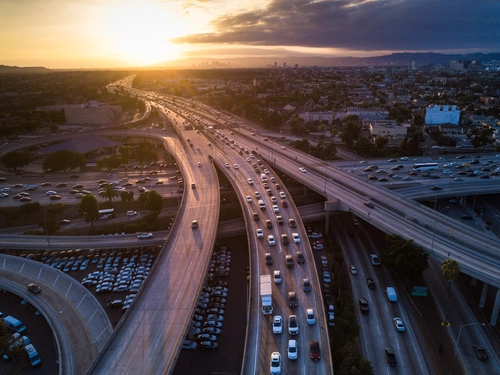
The Infrastructure Investment and Jobs Act or “IIJA” (P.L. 117-58) passed on a bipartisan basis in both the House and Senate and was signed by the President one month ago today, on November 15, 2021. One could have assumed that federal agencies would begin allocating the new funding and commence implementation of the IIJA as soon as it became effective. Unfortunately, that is not the case, but for reasons that may not be readily apparent.
The federal government is actually constrained in its ability to implement the IIJA because it is currently funded and operating under a continuing resolution that extends fiscal year 2021 funding authority and levels, and not a fiscal year 2022 appropriations bill. Because the federal government is operating under an extension of fiscal year 2021 funding, federal agencies do not have the administrative authority under the continuing resolution to implement new programs that did not exist in fiscal year 2021.
In practical terms, this means that the Federal Highway Administration (FHWA) and Federal Transit Administration (FTA) can administer existing programs like the Infrastructure for Rebuilding America (INFRA) program and the Capital Investment Grants (CIG) program, but not new programs created under the IIJA like the Bridge Investment Program.
The impact goes beyond the ability to administer new programs, however, and even limits the amount of infrastructure funding the federal government can distribute. Because the current funding of the federal government is an extension of fiscal year 2021 funding levels, the obligation limitation for expenditures under the Highway Trust Fund also remains at fiscal year 2021 levels. As a result, the IIJA increase in funding for existing Highway Trust Fund programs only takes effect after a fiscal year 2022 appropriations bill—or another legislative mechanism to provide an increased obligation limitation—is enacted.
But there is an exception to this constraint that is important to understand—in addition to reauthorizing the federal surface transportation program, the IIJA provided a direct appropriation to certain existing and new programs.
For those programs that existed in fiscal year 2021 and received a general fund appropriation under the IIJA, the U.S. Department of Transportation (USDOT) is able to administer and make funding available for those programs even without a 2022 appropriations bill in place. The Port Infrastructure Development Program (PIDP) and the Rebuilding American Infrastructure with Sustainability and Equity (RAISE) program are two examples.
Additionally, USDOT may be able to implement new programs created under the IIJA that also received general fund appropriations in the IIJA if those programs expressly allow USDOT to use a portion of the funding for the program to administer the program (the technical term for this is an “administrative takedown”). Without the authority to do an administrative takedown, USDOT would be unable, for the reasons described above, to implement any new program under the IIJA so long as the continuing resolution remains in place, regardless of whether the new program included a direct general fund appropriation.
For example, the National Infrastructure Projects Assistance program created under Section 21201 of the IIJA—the new “mega projects” program—includes an authorization of $10 billion over the next five years, but also includes a direct general fund appropriation in the IIJA of an additional $5 billion over the next five years. Importantly, this program also provides that up to two percent of the amounts made available to carry out the program each year may be used by USDOT to administer the program. As a result, this new program includes the magic recipe—a direct appropriation from the general fund in the IIJA plus the authority to use a portion of those funds to administer the program. As a result, this mega projects program is a bit of a unicorn in that it is one of the few new programs that USDOT is actually able to implement now, without waiting until a fiscal year 2022 appropriations bill is enacted.
- Partner
Shant Boyajian advises public agencies on a wide range of innovative methods to procure and deliver the nation’s largest, most complex infrastructure projects. Clients have found tremendous value in his deep experience in ...
Nossaman’s 30-plus infrastructure attorneys offer clients, colleagues, strategic partners and industry media a wealth of practical experience, insider insight and thoughtful analysis here on Infra Insight. We blog about what we know best, from industry-leading procurements to local and national policy developments that affect the market and our clients.
Stay Connected
 RSS Feed
RSS Feed
Categories
- Airports
- Alternative Project Delivery
- Bridges
- California Environmental Quality Act
- Cybersecurity
- Design-Build
- Financing
- High-Speed Rail
- Job Opening
- Legislation
- News
- P3s
- Policy
- Ports
- Rail and Transit
- Social Infrastructure
- Tollroads/ Turnpikes/ Managed Lanes
- Transportation Infrastructure
- Tunnels
- Water

